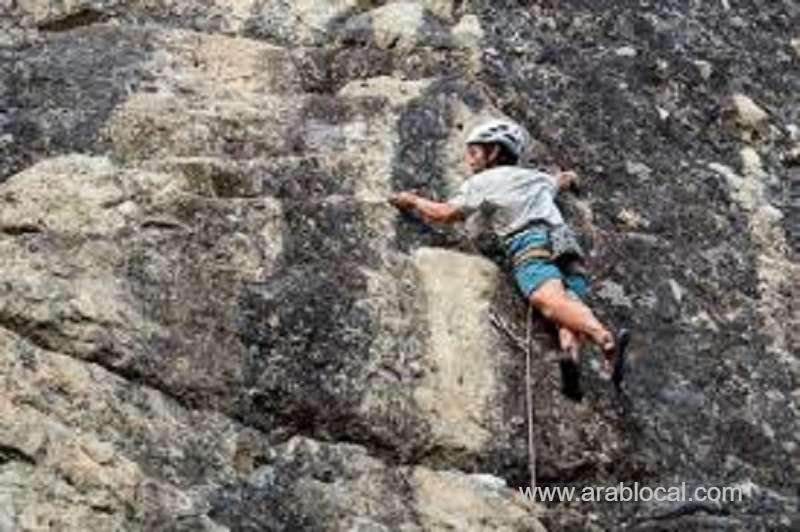Are you planning to test your skills at The SUMMYT™ – the tallest climbing wall in CLYMB Yas Island, Abu Dhabi?
You need to have the right gear for the task. Having the essential climbing tools not only enhances your experience but also ensures safety while tackling these thrilling heights.
In a country like the United Arab Emirates (UAE) – known for its adventure scene and exhilarating indoor climbing and skydiving offers – getting equipped with the best gear is key to enjoying the fun of the ascent and staying safe. This guide will walk you through the must-have climbing essentials every beginner needs to get started.
1. Climbing Rope
A climbing rope is the backbone of climbing safety. It absorbs shock in case of a fall and enables climbers to ascend with confidence.
These ropes can be dynamic or static. Dynamic ropes stretch to absorb impact during a fall, making them perfect for lead climbing, while static ropes, which have minimal stretch, are best for rappelling and rescue operations.
For indoor rock climbing in the UAE, a 35-meter rope is typically sufficient for shorter routes. However, outdoor climbers need longer ropes – 60 meters or more for routes like those at Jebel Jais.
When choosing a rope, look for features like dry treatments to repel water and middle marks to ensure easy length measurement. Of course, it is still safest to ask a climbing expert for advice when selecting your gear.
2. Harness
Whether you’re into mountaineering or prefer indoor rock climbing, picking the proper harness is essential for comfort and safety.
A harness provides a secure connection between you and the rope, allowing freedom of movement without sacrificing safety. Look for one that offers comfort with adequate padding, wide webbing, and ventilation to keep you cool during your climb.
The harness consists of a waist belt and leg loops with front tie-in points to secure the rope. Always check for wear and tear and inspect it carefully before use to ensure it’s still safe for climbing.
3. Belay Device
A belay device is essential when climbing with a partner, as it controls the rope’s tension and helps prevent falls. It works in conjunction with a carabiner to safely manage the rope, whether you’re catching a fall or giving slack.
There are two main types: tubular devices, which rely on friction, and assisted braking devices, which automatically stop the rope in case of a fall.
Aside from having the right gear, learning how to use your belay device properly is vital, so make sure you have hands-on training to be prepared for any situation.
4. Quickdraws
Quickdraws are versatile tools that connect your rope to bolts during lead climbing.
Quickdraws make climbing easier without excessive rope slack, improving safety and performance. They include two carabiners connected by a textile sling, allowing the rope to move freely while staying attached to the route.
Depending on your climbing style, quickdraws are essential for smooth, efficient ascents.
5. Carabiners
Carabiners are the climber’s essential “clips” that connect ropes and gear for a safe and efficient climb.
These versatile tools are indispensable for attaching climbing ropes to bolts or securing nuts and camming devices. They are usually made from high-strength steel or aluminumand designed with a gate mechanism to ensure secure attachment.
When selecting carabiners, quality and durability are non-negotiable. Carabiners come in various types, including wire-gate, straight-gate, and locking carabiners, each tailored to specific climbing needs.
Safety Tip: Always invest in high-quality carabiners to minimize the risk of equipment failure. In many cases, these small yet mighty tools are what stand between you and serious injury.
6. Climbing Helmet
A climbing helmet is a vital safety measure, protecting climbers from falling debris and accidental impacts.
Helmets are essential for outdoor routes like mountaineering, trad climbing, and sport climbing, where loose or weakened rock formations pose a hazard. In contrast, indoor climbing gyms or bouldering areas with crash mats typically don’t require helmets.
The perfect helmet should fit snugly, sitting flat on your head without being uncomfortably tight, and must not obstruct your upward vision. Some helmets are also designed to offer protection during falls, providing added security.
7. Climbing Shoes
The right climbing shoes can significantly enhance your performance and comfort.
For beginners, properly fitting footwear is key during long climbs. Choose flat climbing shoes that offer versatility while reducing discomfort.
But if you’re a more advanced climber, you may opt for more aggressive, curved shoes to take on those technical routes like the pro that you are.
As you gain more experience, tighter and more specialized shoes can help improve precision and grip. However, starting with less aggressive shoes allows beginners to focus on learning techniques rather than managing discomfort.
Pro Tip: Choose shoes that fit snugly but don’t cause pain, ensuring you can climb confidently and comfortably.
8. Chalk and Chalk Bag
Chalk is a climber’s secret to better grip and control. It absorbs sweat to keep hands dry on challenging routes.
For roped climbing, make sure you have a chalk bag that clips around your waist handy. But if you’re a bouldering enthusiast, go for those larger chalk buckets that can also store extra gear.
When it comes to chalk, options include loose chalk, less messy chalk balls, and liquid chalk. Chalk balls are particularly handy for reducing buildup on holds, making climbing more community-friendly.
Insider Tip: Always minimize chalk residue on holds to ensure a clean and enjoyable climbing experience for others.
Gear Up for Adventure
Having the right climbing gear is essential for your safety and enjoyment on the wall. From harnesses to chalk bags, making the right choice for every piece of equipment can make your climbing experience unforgettable (in a good way). Gear up, tie in, and climb toward your next adventure – because The SUMMYT™ in CLYMB Yas Island, Abu Dhabi awaits.







